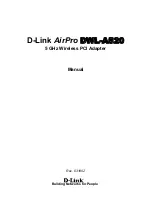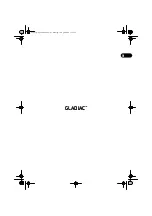
RAID5 SATA II – 3Gbps External Dual Ports PCI-Express Host (Raid 5, 0, 1,10 & JBOD)
RC-223 User Manual
6
Disk Striping (RAID 0)
Striping is a performance-oriented, non-redundant data mapping technique. While
Striping is discussed as a RAID Set type, it is actually does not provide fault tolerance.
With modern SATA bus mastering technology, multiple I/O operations can be done in
parallel, enhancing performance. Striping arrays use multiple disks to form a larger virtual
disk.
Disk Mirroring (RAID 1)
Disk mirroring creates an identical twin for a selected disk by having the data
simultaneously written to two disks. This redundancy provides instantaneous protection
from a single disk failure. If a read failure occurs on one drive, the system reads the
data from the other drive.
Mirrored-Striping (RAID 0+1 also known as RAID 10)
A Mirrored-Striping Set does just what it says, combining both Striping and Mirroring
technologies to provide both the performance enhancements that come from Striping and
the data availability and integrity that comes from Mirroring. When data is written to a
Mirrored-Striped Set, instead of creating just one virtual disk as Striping would do, a second,
Mirrored virtual disk is created as well.
Parity RAID (RAID 5)
Parity or RAID 5 adds fault tolerance to Disk Striping by including parity information
with the data. Parity RAID dedicates the equivalent of one disk for storing parity stripes.
The data and parity information is arranged on the disk array so that parity is written to
different disks. There are at least 3 members to a Parity RAID set. The following example
illustrates how the parity is rotated from disk to disk.
Parity RAID uses less capacity for protection and is the preferred method to reduce the cost
per megabyte for larger installations. Mirroring requires 100% increase in capacity to
protect the data whereas the above example only requires a 50% increase. The
required capacity decreases as the number of disks in the group increases.
Just Bunch of Disks (JBOD, Contiguous)
The JBOD here (also known as
Contiguous
) means a logical drive that can either be an
entire disk drive or a segment of a single disk drive. For this card, JBOD function only
supports one disk. JBOD here is a Contiguous configuration option when “Create RAID
Group” in SATARAID5 Manager Utility.






























